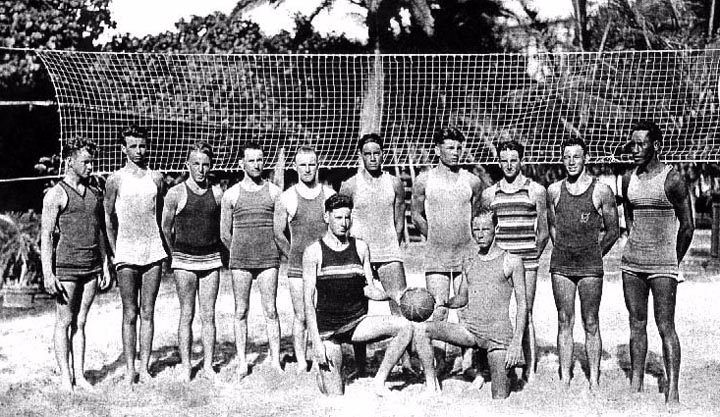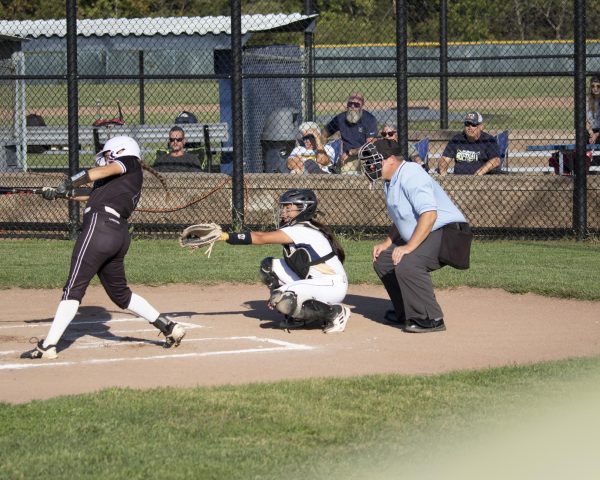Boys Volleyball: Volleyball History, The Social Science And Holt’s Opinion
Introduction
Holt high school has a very diverse and interesting sports program. Although the football team receives a lot of attention and hype, the amount of competitive activities that Holt offers range from tennis, to swimming, to track and field, and even golf. Even with this diversity, Holt has yet to offer a boys volleyball team. In order to fully understand why that is, a survey was sent out to gain student feedback on the topic. However, to better formulate an individual opinion, it is wise to take a look into volleyball’s origin story, as well as an analysis as to why sports are separated by sex in the first place.
Volleyball History
The story of the creation of volleyball begins with a man named William G. Morgan. When Morgan was studying at the Springfield College of YMCA, he met James Naismith. Naismith had invented basketball in 1891, and it is believed that Morgan was heavily inspired by him. In 1895, Morgan moved to a YMCA in Massachusetts, where he became the director of physical education. He wanted a sport for his students that was less violent, but similar to basketball, so that it could be played by students of all age groups. However, a sport that fit this description did not really exist. Morgan set out to fix this issue, and in 1895 history was made as he used rules similar to that of basketball, baseball, tennis, and handball to create what we know today as volleyball. The game was initially called “mintonette”, but the name was quickly changed in 1896 after Morgan was invited to Springfield for a YMCA physical education conference. Dr. Luther Halsey Gulick, director of the professional physical education training school, had asked him to come and show a demonstration of the game. After the demonstration, Gulick mentioned how the ball was constantly flying, constantly in a volley. With Morgan’s agreeance, the name was officially changed to “Volley Ball”, and it remained that way until 1952, when the Administrative Committee of the USVBA decided to spell the name as one word, “Volleyball”.
Volleyball’s origin story adds an entire new layer of interest to the sport. It was created from a mix of several other sports, and yet it is still all its own: the ball used for the sport was made from scratch, the rules are almost completely individual, and the occasions for which the sport is played vary from recreational to competitive. The sport is incredibly inclusive and universally enjoyed. So why is it that, in high schools across the country, volleyball is predominantly played by girls? The answer to this question may be found in the exploration of our gendered society and social science.
The Social Science
The definition of gender in society has progressed in importance and accurate representation over the years. However, biologically speaking, the definition of a person’s sex will always remain the same, as biologically there are two (not including the hermaphrodite rarity) main sexes in humans: XX chromosomes (female) and XY chromosomes (male). Gender and sex are completely separated from one another, however heteronormativity and ignorance in our society continues to group the two together. Several arguments about the separation/ genderization of male and female sports involve sexist and invalid points revolving around gender itself. The only arguments that hold any footing in regards to sports are those considering the differences in the male and female sexes, not gender identity.
Biologically, the female sex and the male sex are slightly different. Generally, the female sex has a slightly shorter and smaller skeletal structure than the male sex, and their chemical balances are also different. These facts are often used to defend arguments on separating the two sexes in sports teams, and in labeling certain sports as male or female. It is believed that biologically, the male sex has a physical advantage over the female sex, and therefore they cannot play against one another. It is also believed that females should have their “own sports” (cheerleading, volleyball, tennis, etc.) that involve less violent contact. This arguement is also prevents people who are transgender from playing on a team with the gender they identify with, since they are biologically different.
On the other hand, some people argue that someone’s biological sex should not be a factor in what sports they play. They argue that although the female and male sex are, on the average, slightly different, being physically and mentally different is a part of human nature. It has nothing to do with sex, as a person of the female sex could be stronger than a person of the male sex, a person of the male sex could be more emotional that a person of the female sex, etc. They believe that everyone has differences, no matter their sex, so biological sexes should not be used to stop them from playing with or against whoever they want, and especially not from playing whatever sport they want.
Both of these viewpoints have caused discourse in the sports community for many years, and in viewing the differences in each high school’s sports programs, it is clear that the diversity in each program is relative. Holt’s sports program is relatively average in terms of diversity, but student interest in certain sports has caused a lot of discussion and speculation as to why certain male and female versions of sports are not made available. What do the student’s of Holt think about the unavailability of boys volleyball?
Holt’s Opinion
When it comes to school athletics, Holt has many sports to offer. Most of the sports that are offered are co-ed, meaning that all genders have the opportunity to try out and join the team. Sports like football, however, only have a boys team, but there is an event each year in which the girls get a chance to play, called Powder Puff. Most of the time, anybody can play any sport that they are interested in at school.
However, there is one sport in which one gender is completely excluded and has no opportunity to play it professionally at the school. Holt does not have a boys volleyball team. The creation of a team for boys has never been discussed or considered, and there has never been any question as to why. What is the real reason we do not have a boys volleyball team at Holt?
In a survey that received 79 responses from Holt students, a question was asked to the male students on if they would be interested in playing on a volleyball team created for them. 64 percent of the boys answered yes, and 18 percent of the boys answered maybe or no. The female students were asked if they would think about attending a boys volleyball game and supporting them if a team was created. 85.7 percent of the girls answered yes, and 14.2 percent answered maybe or no.
Despite the students’ interest, Holt does not have a boys volleyball team. Out of curiosity, some students have turned to Missouri State High School Athletics Association (MSHSAA) for more information.
“I talked to the athletics director, and he told me that MSHSAA considers boys volleyball an ‘emerging sport’, and the board decided that the Wentzville School District doesn’t accept emerging sports,” said Jacob Dunavan (‘23).
In the survey, students explained their speculation on why the boys do not have their own team.
“There might not be enough boys to join, because some boys think volleyball is a girls sport,” said Breanna Carpio (‘25).
“I think that if the girls get to have a volleyball team, the boys very well should be able to as well, if they wanted to. I just think that it’s unfair, because I’m sure there are boys that would join,” said Abigail Holland (‘24).
At this point, there is still no volleyball offered for boys at Holt. However, many of the boys at Holt claimed that they would be interested in playing if there was a team. Many still do not know why there is not a team for boys at this time. But many of us will never know, will there ever be a boys volleyball team at Holt?
Sources
https://www.fivb.com/en/volleyball/thegame_glossary/history
http://sociology.iresearchnet.com/sociology-of-sport/gender-and-sports/












